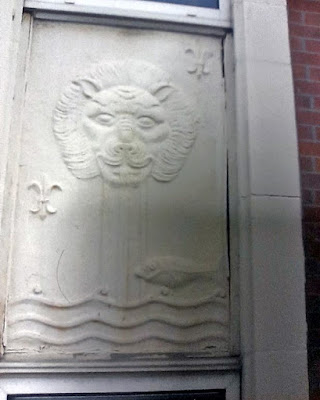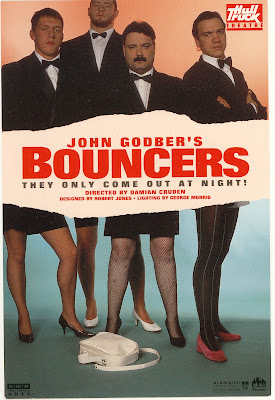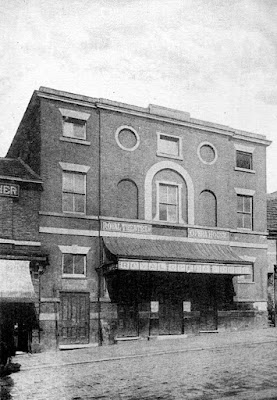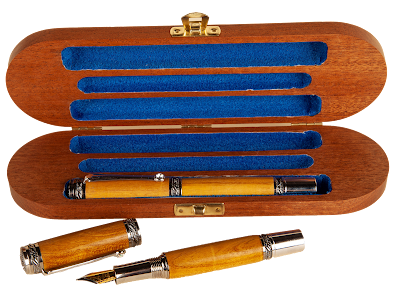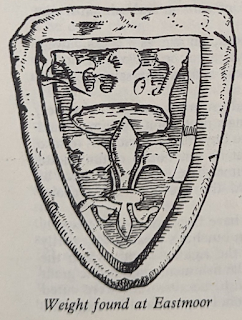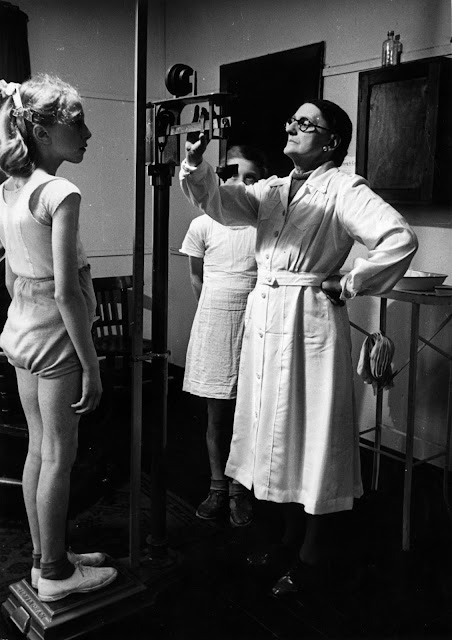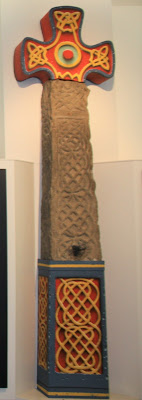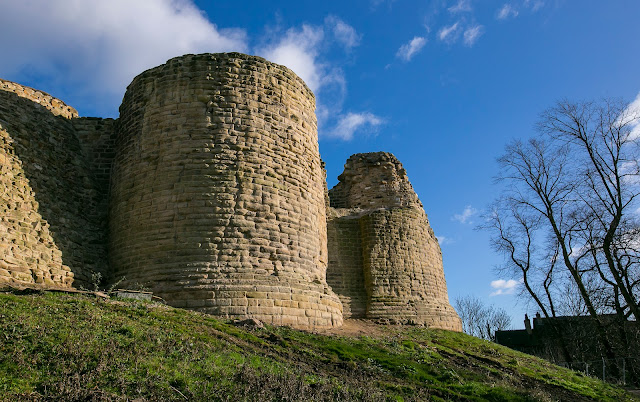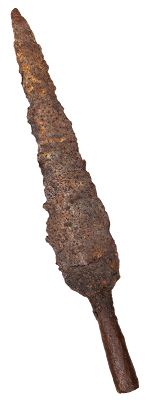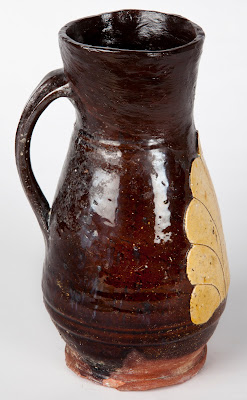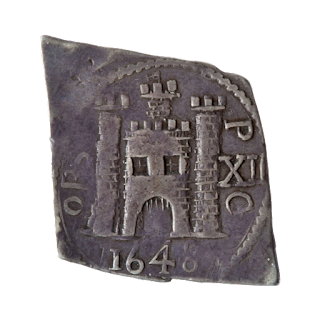Women are often overlooked in economic history. We tend to think of women in the 19th century as working in factories or domestic service, but women ran all kinds of businesses in Victorian Britain. In fact, female entrepreneurs were more common then than they are now.
Pontefract was no exception.
As today, setting up her own business gave a Victorian woman more control over where and when she worked. This made it easier to fit with their other 'traditional' responsibilities like childcare.
 |
| Step back in time to Victorian Pontefract in Ladies who Launch |
Probably the most famous historic local businesswoman is Ann Dunhill. She ran the iconic Pontefract business Dunhill's for nearly 20 years. Dunhill's are credited as the inventors of the liquorice Pontefract Cake.
But what other businesses were enterprising women running in 19th century Pontefract?
A brilliant team of volunteers, supported by our curator, chose five Victorian businesswomen to research and write about. Read on to find out more about them!
Maria Taylor - watchmaker
Researched and written by Samuel Lou
 |
| "Look at this!" A clock made by Taylor's of Pontefract is one of the first things you see in the Ladies who Launch exhibition. |
Maria
Knight was born in Essex and moved to Pontefract in 1827 when she married
Thomas Taylor. Country-wide networks were common for Quaker families.
Thomas
was a renowned watchmaker. When he died in 1844, Maria stepped up and continued
the family business.
Maria
ran a successful firm employing three skilled watchmakers and a shop assistant.
She advertised using her son Joseph's name. However, Maria was really the head of the
business and Joseph was her employee.
 |
| Back of a watch made by Taylor's of Pontefract, with 'Pontefract' and 'Joseph Taylor' engraved on it. This watch is on display in the Ladies who Launch exhibition. |
Maria retired in 1861 but continued to live
in Pontefract, wealthy enough to have a housekeeper. She died in 1893.
The
mid 19th century was a peak for British clock and watchmaking.
Industrialisation brought railways and fixed factory shifts so accurate
timekeeping was important. Watches became fashionable items of jewellery.
But
it was not a common profession for Victorian women. Fewer than 4% of watchmakers at the time were women, so Maria's story is unusual.
Sarah Winterburn - upholsteress
Researched and written by Julia Webb
Sarah Winterburn was born in Tanshelf on 11 May 1808 into a typical working-class household. Her father Richard was a currier, working with leather hides. Her mother raised eight children.
Sarah remained single throughout her life. She started her upholstery business from her parents’ home. She likely picked up her craft from an early age as her elder sisters Ann and Matilda were dressmakers.
Sarah made home visits to her clients, repairing the upholstery on furniture along with other bits of sewing work. By running her business this way, she was able to make a decent living whilst supporting her elderly parents. She may also have financially supported her nephews to keep them out of the workhouse.
 |
| A display representing Sarah Winterburn's home upholstery business - and her teapot full of money! |
Sarah operated a successful business throughout her life. After her death on 25 June 1881, a teapot stashed with £150 was found in her house. She also had a personal estate of £247 and 17 shillings, worth more than £16,000 today.
This suggests Sarah had made a lot of money for a single, self-employed woman of the Victorian period.
 |
| Get hands-on with trades from the past in Ladies who Launch |
Ann England - ironmonger
Researched and written by Alice Sze
Ann Lilley was born in Pontefract in 1782 and married Joseph England, a tinner, in 1806.
After Joseph's passing, Ann took over his ironmongery business and became a skilled brass and tin plate worker.
The 1834 National Commercial Directory lists Ann’s business at Ropergate, Pontefract. By 1851, she lived in Baxtergate and was a retired tinner.
 |
| A display recreating Ann England's ironmongers in Ladies who Launch |
During the Victorian age, it was unusual for women to work as tinners and braziers, which were traditionally male-dominated trades. Ann defied convention and became a skilled artisan.
Ann used specialised tools like hammers and soldering irons to craft metal goods to sell. England’s Ironmongery sold household utensils, cookware, containers, decorative ornaments, and more.
Ann’s legacy continued through the generations. Her son William and his descendants became well-known ironmongers in Pontefract.
England’s legendary shop at Market Place was fondly remembered in the community until its closure in 1979.
 |
| Shop window of England's Ironmongers, dating to between 1930 and 1950 |
 |
| Inside of England's Ironmongers in the 1970s, providing inspiration for the recreated display in Ladies who Launch |
The Gelder Sisters - grocers and drapers
Researched and written by Jennifer Machin
Sisters Mary, Ann and Sarah Gelder were born in Pontefract between 1843 and 1847. Their father, Joseph, was a successful local farmer and Alderman for Pontefract.
Kelly’s Directory of West Riding of Yorkshire 1881 lists the
3 sisters under the commercial section as grocers and drapers in North
Baileygate. They were listed as ‘misses’ and so were unmarried.
Sarah Gelder was a draper and Mary Gelder was a grocer. They were wealthy enough to have a servant and younger relatives living with them.
Sarah Gelder and Ann Gelder died in the 1890s. Mary Gelder then took over her sister's draper’s business.
 |
| A recreation of the Gelder sisters' drapers shop in Ladies who Launch |
Sarah and Mary were clearly successful though, extending the business into selling costumes alongside the usual drapery.
Being a grocer was also not typical for Victorian women. However, it was a good trade and a successful business decision for the sisters. Like many businesses at the time, they were probably helped by family support. Their father’s farm would have been a useful supplier.
Mary Gelder continued to live in Pontefract until at least 1901. She is listed on the 1901 census as living in North Baileygate. She was head of the household, and had two servants and her niece (Mary Wood) living with her.
Hannah Lindley - laundress
Researched and written by Dave Evans, Curator
Hannah was born in Thorpe Audlin in 1831. Her father, Richard Brewster, was a farmworker, moving between Ackworth, Badsworth and Darrington.
Hannah was a domestic servant in Hemsworth by the age of 18. In 1856 she married garden labourer John Lindley and they began a family in a small yard in Pontefract.
John did well at work and by 1871 the family of five lived in a larger house on Ropergate along with a lodger.
 |
| A display inspired by Hannah Lindley's home laundress business in Ladies who Launch |
John died in 1873, leaving Hannah to support her growing family on her own. Hannah moved to Sessions House Yard, then Crab Hill, and set up as a laundress.
Being a Victorian laundress was hard work, especially wringing out wet linens. It wasn’t just washing but also drying and ironing, the whole process taking days. However, it could be done at home alongside caring for children.
Poorer widows like Hannah often became laundresses. As women running their own lives and businesses, laundresses were known for their independence.
Visiting Ladies who Launch: Celebrating Pontefract's Women in Business
It's not just Victorian businesswomen we explore! We bring it into the 21st century with displays co-created with four businesses being run by local women today.
Photos of the exhibition in this blog are by Nick Singleton.












.jpg)



